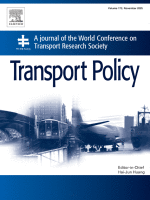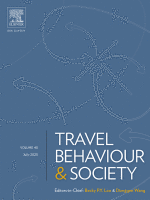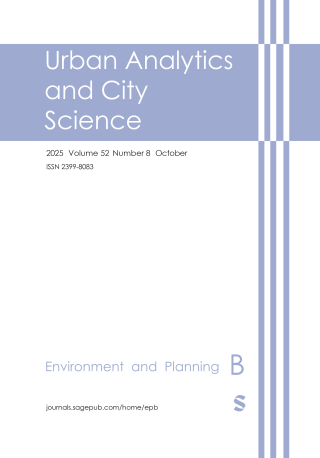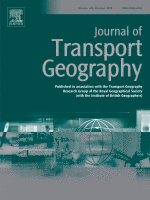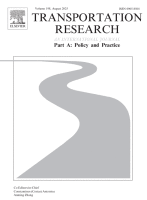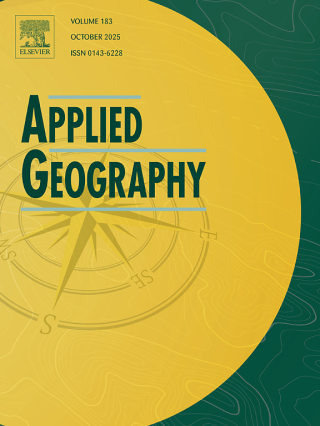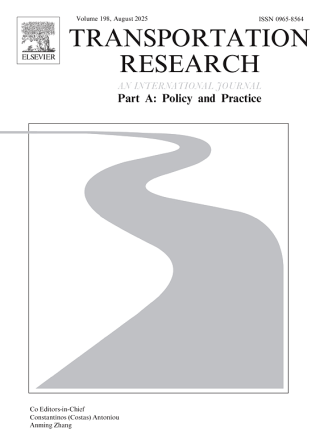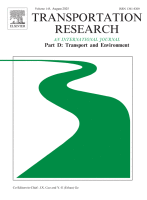-
10 Oct 2025 • Journal Article • Transport Policy
Untangling proximity and accessibility effects of transit on property prices
AbstractMost research interested in understanding the causal impacts of transit investments on property prices approach the topic through the lens of proximity. However, recent research highlights the networked nature of accessibility impacts. This presents challenges in causal research, particularly in mapping accessibility impacts, defining treatment and control groups, and
… show more -
1 Oct 2025 • Journal Article • Journal of Rural Studies
“It's such a big ask for a volunteer”: Community transport as a sticking plaster solution to rural transport poverty
AbstractCompared to urban settings, rural areas are characterised by high rates of car ownership and few alternative transport options. This can lead to transport poverty, especially among older adults without car access. Community transport, not-for-profit and primarily volunteer-run local transport schemes, helps to address this rural transport poverty in the UK. This paper
… show more -
1 Oct 2025 • Journal Article • Travel Behaviour and Society
Getting around on foot: Older adults’ walking experiences and perspectives on neighbourhood walkability across Canada
AbstractOlder adults’ living environments are instrumental in making walking part of their daily lives, as we strive to promote healthy aging. Objective measures, such as WalkScore®, and subjective measures of walkability provide means to grasp the factors that enable or hinder frequent and enjoyable walking. However, there is limited consensus on what factors contribute to
… show more -
Oct 2025 • Journal Article • Environment and Planning B: Urban Analytics and City Science
ActiveCA: Time use data from the general social survey of Canada to study active travel
AbstractThis paper describes {ActiveCA}, an open data product with Canadian time use data. {ActiveCA} is an R data package that contains analysis-ready data related to active travel spanning almost 40 years, extracted from Cycles 2 (1986), 7 (1992), 12 (1998), 19 (2005), 24 (2010), 29 (2015), and 34 (2022) of the Time Use Survey (TUS) from the General Social Survey (GSS). Active
… show more -
3 Sep 2025 • Journal Article • Journal of Transport Geography
Exploring equity implications of online grocery, online restaurant delivery and e-shopping service usage in a suburban context
AbstractBy examining how different demographics engage with online services, researchers and policymakers can better understand patterns and disparities in their access, usability, and engagement. This study explores the factors driving the frequent usage of online services, particularly online grocery shopping, online restaurant delivery, and e-shopping. By utilizing a
… show more -
28 Aug 2025 • Journal Article • Findings
Are Women More Transport Poor Than Men? Exploring Gender Discrepancies in Transport Poverty
AbstractThis work uses a national index to examine differences in transport poverty between men and women in Canada. We calculated for each metropolitan area the average indices of social disadvantage, transport disadvantage, and transport poverty for men and women. Applying a paired t-test, we observe men have higher inaccessibility, women have higher marginalization, and
… show more -
1 Aug 2025 • Journal Article • Transportation Research Part A: Policy and Practice
Towards completely caring 15-minute neighbourhoods
AbstractThe “15-Minute City” concept has been embraced by global leaders to promote human-scale neighbourhoods with transport and land-use designs that support short trips to daily necessities. This paper bridges the 15-Minute City to “Mobility of Care”, a framework that foregrounds travel to care destinations, travel done predominately by women. This focus contrasts the more
… show more -
30 Jul 2025 • Journal Article • Applied Geography
What makes people satisfied with their Neighbourhoods? Exploring individual characteristics beyond sociodemographics in Scarborough, Ontario
AbstractNeighbourhood satisfaction is a key topic in urban planning due to its impact on well-being and inequality among urban dwellers. While determinants of neighbourhood satisfaction have been studied extensively, less is known about individual characteristics such as travel behaviour, political values, transport barriers, and aspirations, beyond traditional sociodemographics
… show more -
16 Jul 2025 • Journal Article • Transportation Research Part A: Policy and Practice
What shapes perceived accessibility? Unpacking the interplay of sociodemographics, latent perceptions, and traditional accessibility metrics
AbstractAccessibility, understood as how easily individuals can reach a desired destination, can be measured in multiple ways. Perceived accessible opportunities, which include those seen as viable alternatives and as feasible given personal and scheduling constraints, may vary from an analyst’s assessment when calculated accessibility measures are used. Our study explores how
… show more -
16 Jun 2025 • Journal Article • Transportation Research Part D: Transport and Environment
Bridging access with life satisfaction and Nussbaum’s core capabilities
AbstractWe explore how perceived access to destinations supports broader human capabilities such as play, health, joy, and wonder. Drawing on Nussbaum’s (2011) framework, we surveyed over 1,400 residents of Melbourne, Australia, asking whether their neighbourhoods support their capabilities “to do or be” in 26 aspects of life. We then applied a structural equation model to
… show more
